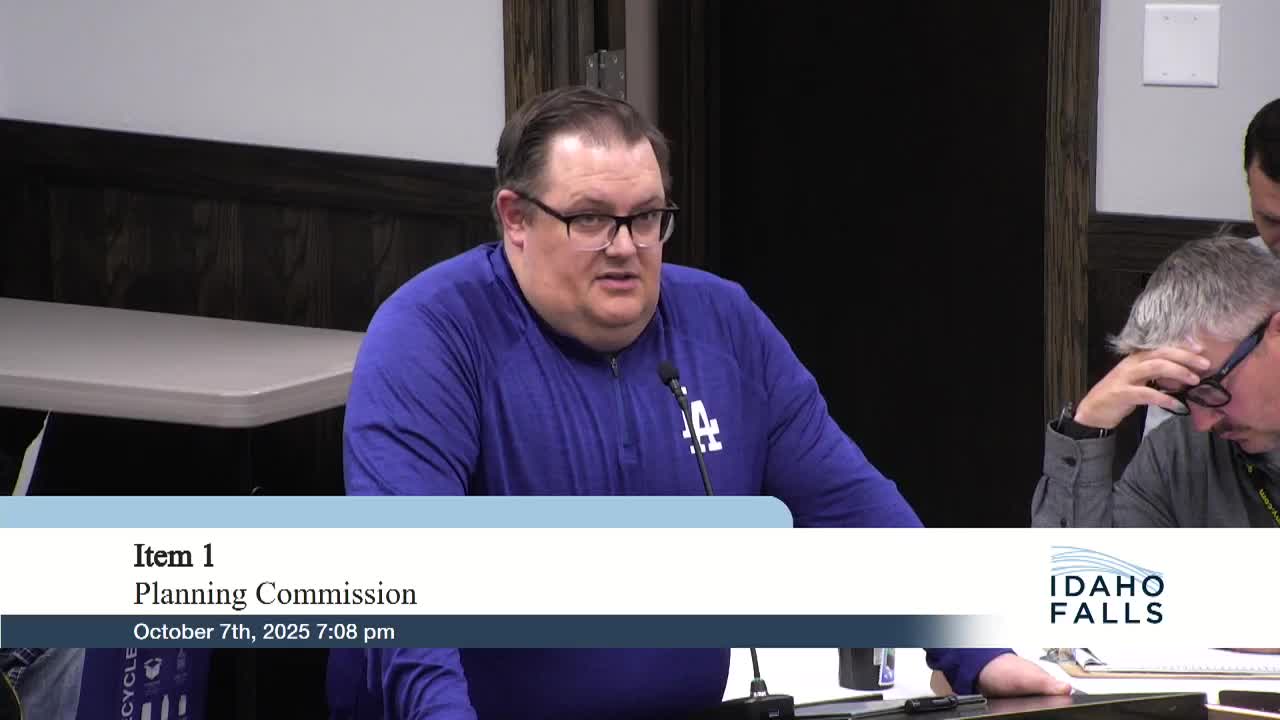Iowa Falls Council Debates Density and Zoning of Proposed Townhome Project
October 07, 2025 | Idaho Falls, Bonneville County, Idaho
This article was created by AI summarizing key points discussed. AI makes mistakes, so for full details and context, please refer to the video of the full meeting. Please report any errors so we can fix them. Report an error »

In a recent meeting of the Idaho Falls Planning Commission, significant discussions centered around a proposed housing project that aims to address the growing demand for affordable housing in the area. The meeting highlighted concerns regarding the density and proximity of the proposed units, as well as the implications of zoning regulations and community impact.
One of the primary topics of debate was whether the proposed units were too close together and if their density was appropriate for the area. A representative emphasized that the project, if it were to face a public street, would need to adhere to specific yard requirements, potentially sacrificing green space for compliance. However, they argued that the current plan, which includes amenities and flexibility, is designed to make the best use of the land while still providing necessary community features.
The discussion also touched on the historical context of zoning in Idaho Falls, noting that the R-1 zone has permitted single-family attached units for decades. This long-standing allowance suggests that the proposed project aligns with existing regulations, despite concerns about the number of units being built. The representative pointed out that the project could help alleviate the housing shortage, which has been a pressing issue as rising home costs continue to affect residents.
Traffic concerns were raised, particularly regarding the impact of the new development on local roads and schools. The representative acknowledged the existing challenges with school overcrowding but argued that the project would not exacerbate the situation significantly. They noted that traffic from the new units would be distributed throughout the day, minimizing potential congestion.
Additionally, the meeting addressed misconceptions about the nature of the proposed units, which some attendees referred to as apartments. The representative clarified that while some units could be purchased by investors and rented out, the intention is for them to be owner-occupied, providing more affordable housing options for families.
The Planning Commission's discussions underscored the delicate balance between development and community needs. As the city grapples with rising housing costs and limited supply, the proposed project represents a potential solution, albeit one that requires careful consideration of local concerns and zoning laws. The staff recommended approval of the project, indicating that it aligns with the city's comprehensive plan and existing codes.
As the commission moves forward, the outcome of this proposal will be closely watched, reflecting broader trends in housing development and community planning in Idaho Falls. The next steps will involve further deliberation and a recommendation to the city council, where the final decision will be made.
One of the primary topics of debate was whether the proposed units were too close together and if their density was appropriate for the area. A representative emphasized that the project, if it were to face a public street, would need to adhere to specific yard requirements, potentially sacrificing green space for compliance. However, they argued that the current plan, which includes amenities and flexibility, is designed to make the best use of the land while still providing necessary community features.
The discussion also touched on the historical context of zoning in Idaho Falls, noting that the R-1 zone has permitted single-family attached units for decades. This long-standing allowance suggests that the proposed project aligns with existing regulations, despite concerns about the number of units being built. The representative pointed out that the project could help alleviate the housing shortage, which has been a pressing issue as rising home costs continue to affect residents.
Traffic concerns were raised, particularly regarding the impact of the new development on local roads and schools. The representative acknowledged the existing challenges with school overcrowding but argued that the project would not exacerbate the situation significantly. They noted that traffic from the new units would be distributed throughout the day, minimizing potential congestion.
Additionally, the meeting addressed misconceptions about the nature of the proposed units, which some attendees referred to as apartments. The representative clarified that while some units could be purchased by investors and rented out, the intention is for them to be owner-occupied, providing more affordable housing options for families.
The Planning Commission's discussions underscored the delicate balance between development and community needs. As the city grapples with rising housing costs and limited supply, the proposed project represents a potential solution, albeit one that requires careful consideration of local concerns and zoning laws. The staff recommended approval of the project, indicating that it aligns with the city's comprehensive plan and existing codes.
As the commission moves forward, the outcome of this proposal will be closely watched, reflecting broader trends in housing development and community planning in Idaho Falls. The next steps will involve further deliberation and a recommendation to the city council, where the final decision will be made.
View full meeting
This article is based on a recent meeting—watch the full video and explore the complete transcript for deeper insights into the discussion.
View full meeting